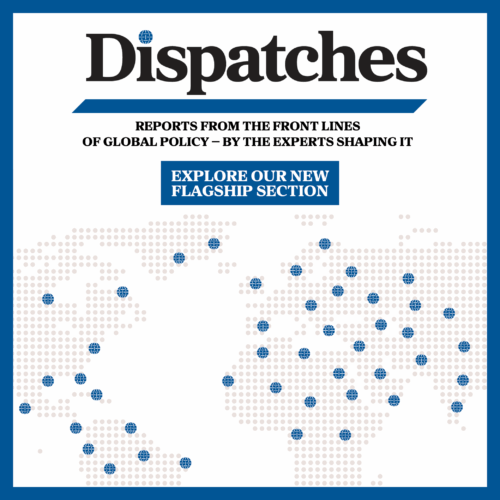Yesterday in Brussels, NATO kicked off a yearlong process to draft a new strategic concept. The last strategic concept was adopted a decade ago at the Washington Summit marking the alliance’s 50th anniversary, when NATO was at war in what turned out to be a 78-day bombing campaign to stop Serbia and its autocratic leader Slobodan Milosevic’s ruthless campaign of slaughter in Kosovo labeled mildly as ethnic cleansing. But, in many ways, the challenges today are greater than at any time in NATO’s 60-year history.
For one thing, NATO’s success led to a complete dissolution of the enemy it was created to deter, contain and defeat when the Soviet Union imploded two decades ago. Yet, NATO still remains a military alliance directed against very diaphanous and different threats. Thus, NATO has been struggling for a raison d’etre that recognizes traditional defense does not fit the broader security challenges and dangers that are in evidence, all the while expanding from 19 to 28 member nations.
The centerpiece of the alliance rests in Article V of the Washington Treaty: an attack on one in Europe or North America constitutes an attack against all. In conducting its business, consensus, meaning unanimity in agreement, has been the modus operandi. However, the definition of threat is not universally shared as many NATO members are more comfortable with traditional and proximate notions of territorial defense than with the newer expeditionary missions that have taken the alliance to its first ground war ever in Afghanistan, and with new threats from cyberattack and protection of critical infrastructure to responding to huge disasters whether of man or nature. And make no mistake. The future credibility and cohesion of the alliance rests on how well or how badly Afghanistan turns out — in any event likely to prove a “close run thing.”
Beyond these profound changes in the security environment, NATO must come to grips with other tough issues. In virtually all member states, defense spending is declining in difficult economic times. NATO’s bureaucratic organization is sclerotic and needs major overhaul. And in dealing with this array of daunting issues, as outgoing Supreme Allied Commander Army Gen. John Craddock has outspokenly observed, “NATO’s political leadership is often AWOL.”
The Leninist question of “what is to be done?” now confronts the alliance in developing a new strategic concept. But not everything is negative. NATO has proven to be the most successful military alliance in history. It has the best armed forces in the world, many of whom have seen active combat in Afghanistan and some in Iraq. And France, under the leadership of President Nicolas Sarkozy, has rejoined the military command structure.
A new leadership is taking over in the key leadership positions. Danish Prime Minister Anders Fogh Rasmussen will become the new secretary-general later this fall. U.S. Adm. James Stavridis is the new Supreme Allied Commander Europe, the first time a navy admiral has held that position. And in September, French Air Force Gen. Stephane Abrial will assume the duties of Supreme Allied Commander Transformation in Norfolk, Va., becoming the first non-American ever to hold that post.
Furthermore, NATO has just completed a major study on “Joint Futures” means to sketch out the range of threats facing the alliance from conventional to the more exotic, a very good first step in helping the alliance think through the nature of the dangers it is prepared to counter. Clearly, the shift from a defense-based to a broader security-based alliance is essential. However, given domestic politics in the 28 member states, while intellectually straightforward, if not done carefully, this transformation could be the political equivalent of leaping across the Grand Canyon in two single bounds.
In negotiating this transformation from defense to security as the basis for the alliance, history offers a tempting way forward. In the mid-1960s, the alliance was divided over conventional defense versus nuclear deterrence. With growing Soviet capabilities in both conventional and nuclear forces, the United States argued for stressing the former. The European allies, not wanting either a conventional war in their back yards or having to spend more on conventional forces, favored nuclear deterrence. The solution was “flexible response.”
Originally meant to defend across the entire conflict spectrum, the political brilliance of flexible response was that it allowed both sides of the Atlantic to emphasize their strategic preferences, relieving this political tension. What is needed is a new version of flexible response that enables member states to focus on the threats each view as most critical so the alliance is not forced into strategic platitudes or fundamental deadlock over the rationale underpinning the alliance. If this balance can be achieved, NATO could have at least another 60 years left. If not, we could end up reinventing an unsatisfactory replacement structure.
Harlan Ullman is a member of the Atlantic Council’s Strategic Advisors Group and a Distinguished Senior Fellow at the National Defense University. This essay was originally published as “NATO: Relevant or Relic?” in the Outside View column, part of UPI‘s Emerging Threats analysis section.
